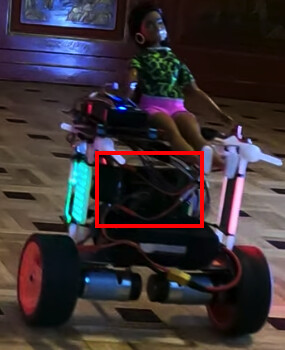See this (essentially TTL glue to adapt Pixhawk DIR/PWM signals to the L298N bridge signals). I haven’t tried it, but plan to.
It is too simple, so may be that when changing direction some braking could be convenient. In that case you can try to insert an Arduino with the same idea.
Here an Arduino adapts the SPEED/DIRECTION signals provided by the stepper motor encoders to the DIRECT/QUADRATURE signals required by the ArduRover software. It is hanging at the back of the driver and signals with red/green leds the QUADRATURE generated signals for the left/right wheels.
You can also use this other very simple board, soldering pulldowns as described. See it in action here (balance bot at the right).
